Summer is stubborn this year, with another week of hot weather forecasted before the cool of autumn finally descends. This hasn’t stopped the seasonal blush of brilliant red, orange and yellow hues from spreading through the landscape. The unseasonal heat means summer flowers, herbs and crops are also persisting, even thriving without the burning frosts.
This Friday, not only will the full moon rise as the Harvest Moon,* the full moon closest to the autumn equinox, it will also be a Blood Moon. Blood Moons are total lunar eclipses, when the moon transits through the Earth’s shadow. The shadow appears orange or red as only their longer wavelengths can make it through the Earth’s atmosphere without scattering.
The eclipse will last between 55 to 80 minutes, but will begin before the moon has risen in most parts of Australia. The best time to see it will be right at moonrise with the eclipse finishing soon after. Sadly, it is unlikely to be seen by those on the west coast of Australia as moonrise will occur after the eclipse has finished. Moorise times for the capital cities in view of the Blood Moon are:
Sydney – 7.13pm
Melbourne – 7.40pm
Brisbane – 6.04pm
Canberra – 7.22pm
Adelaide – 7.35pm
Darwin – 7.02pm
Hobart – 7.32pm
*The article ‘Full Moon Names for the Southern Hemisphere’ provides the names for the full moon adapted to match their appropriate season in the southern hemisphere and an exploration of folklore and mythology connected to the Blood Moon.
Next week, the autumn equinox will mark the threshold between the seasons of life and verdant growth and the decay, death and rest of the colder half of the year. From the autumn equinox until the spring equinox, the nights will be longer than the days, reaching their zenith on the longest night at the winter solstice.
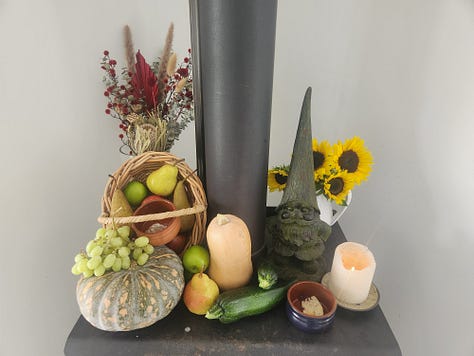
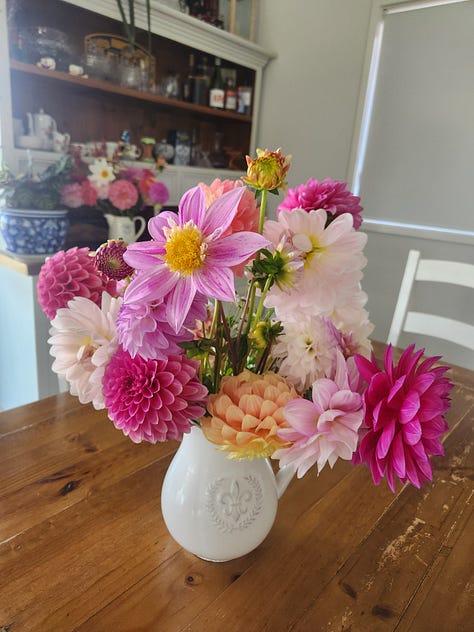
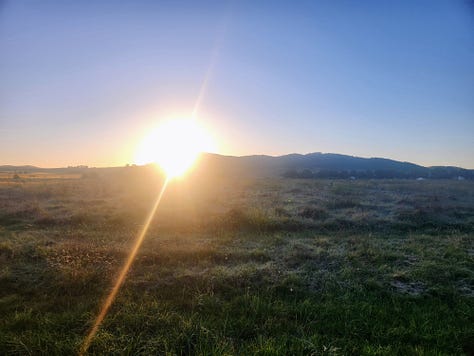
Historically, the autumn equinox has been associated with harvest festivals, a time to give thanks for the bounty of crops and to prepare for the coming winter months. From ancient times to modern, communities come together to bring in the harvest and celebrate their collective labour's fruits. Let’s soak up this seasonal bounty by exploring the history and traditions of the autumn equinox and harvest celebrations in Europe.
Ancient Greece and Rome
The autumn equinox, when the length of night and day were equal, marked a pivotal point in the celestial calendar for the ancient Greeks and Romans, heralding the end of summer and harvest time. In Greek mythology, the autumn equinox is associated with Persephone (Roman Proserpina), the daughter of Zeus (Roman Jupiter) and Demeter (Roman Ceres), the goddess of agriculture. At this time of year, Persephone was abducted by Hades (Roman Pluto), and taken to the underworld, where he forced her to marry him. Demeter grieved her daughter so deeply that she turned the world to winter, nothing grew and the people starved. After entreaties from the other gods, Hades allowed his wife to return to her mother at the spring equinox, preventing the world from being plunged into perpetual winter. However, Persephone was bound to return to her husband in the underworld every year at the autumn equinox.
In ancient Rome, as in ancient Greece, the harvest celebrations were a pivotal part of the agricultural calendar. Farmers and citizens alike would offer the fruits of their harvest to Ceres (Greek Demeter) or other similar goddesses such as Fortuna and Abundantia, as a gesture of thanks for the season's yield. These offerings were accompanied by games (ludi cercensis - circus games), music, poetry readings and plays (ludi scaenici), and feasting. Romans commonly adorned their personal and public altars with cornucopia, typically depicted as large horn-shaped containers overflowing with fresh produce, grains, and other foods representing prosperity and abundance.
The cornucopia, also referred to as the 'horn of plenty,' is often depicted as a woven basket or pannier in the shape of a horn, traditionally used in western Asia and Europe to hold and carry harvested foods. It is worn on the torso, usually on the back or side, leaving the harvester’s hands free to pick their harvest. This style is commonly used for American Thanksgiving decorations.
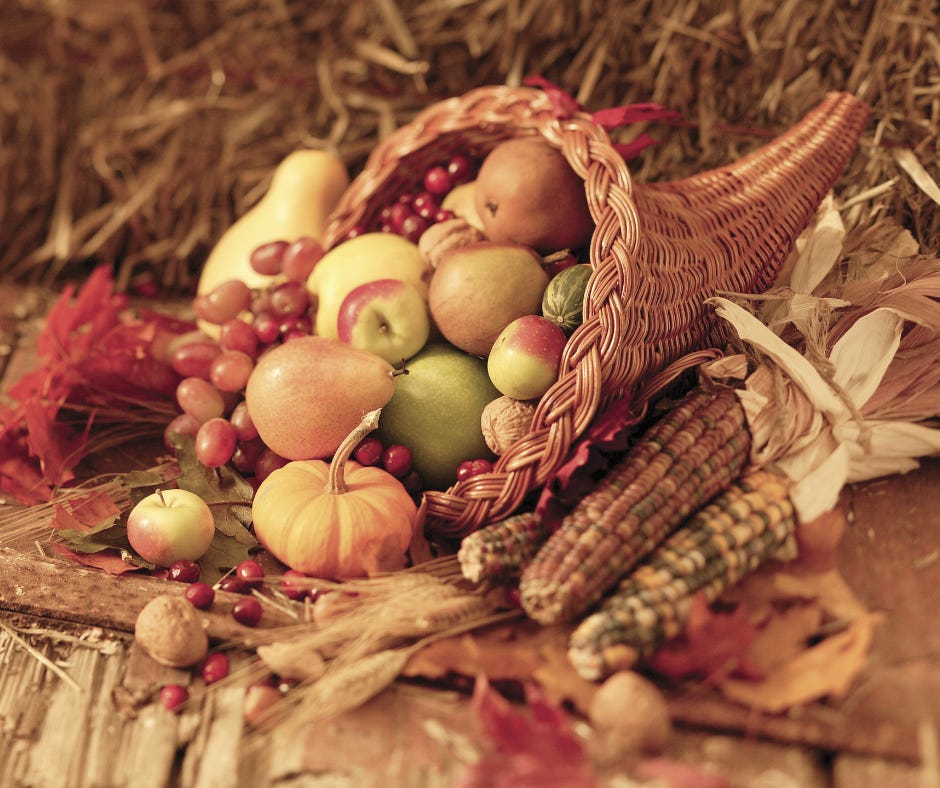
The Roman ‘higher classes’ depicted the cornucopia as a cow horn, in order to maintain a strict separation between themselves and the ‘low class’, the workers (coloni) who used the basket horns for harvesting. They also developed myths surrounding the origin of these types of cornucopia.
One of the best-known involves the birth and nurturance of the infant Zeus, who had to be hidden from his devouring father Cronus. In a cave on Mount Ida on the island of Crete, baby Zeus was cared for and protected by a number of divine attendants, including the goat Amaltheia ("Nourishing Goddess"), who fed him with her milk. The suckling future king of the gods had unusual abilities and strength, and in playing with his nursemaid accidentally broke off one of her horns, which then had the divine power to provide unending nourishment, as the foster mother had to the god.
In another myth, the cornucopia was created when Heracles (Roman Hercules) wrestled with the river god Achelous and ripped off one of his horns; river gods were sometimes depicted as horned.

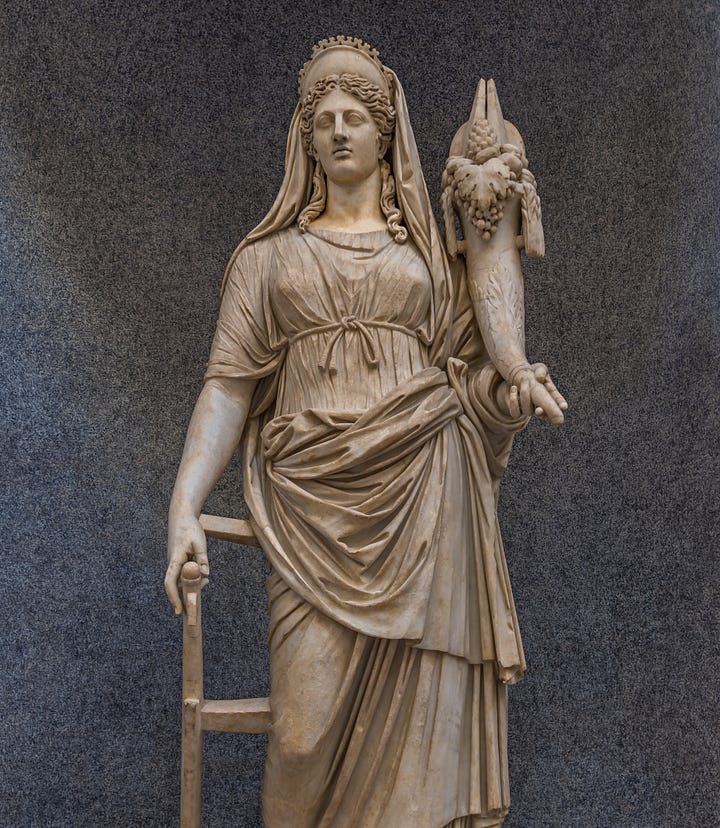
Many Roman harvest festival traditions merged with or were incorporated into local traditions across the Roman Empire, including the British Isles.
Harvest Home - British Isles
Though the British Isles adopted or incorporated ancient Roman traditions for celebrating the autumn equinox and the harvest, they also retained their much older traditions. Harvest Home is a celebration of the final harvests of cereal crops (corn), traditionally harvested in August until the early 19th century when increased production pushed the harvests backwards into July and forwards into September.
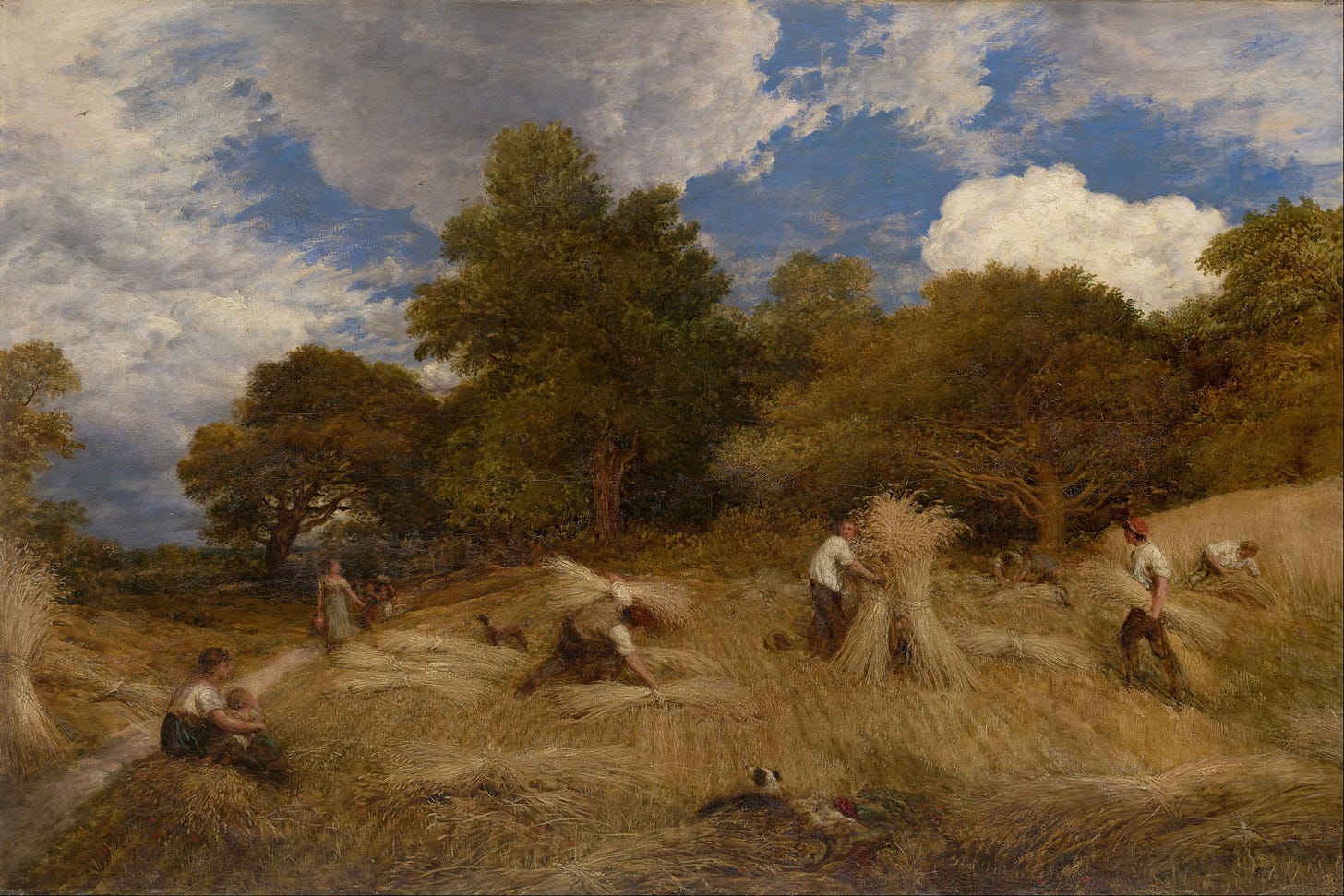
A widespread custom in the British Isles connected to bringing home the last sheaf of grain has survived into the modern day in some places. The last sheaf was believed to contain the spirit of the grains, or bad luck and shame as the last field and crop to be reaped. Various local ceremonies and rituals for cutting the last sheaf included sickle-throwing competitions, singing and/or reciting prayers and making ‘harvest tokens’ from leftover wheat stalks. The last sheaf was named, sometimes dressed in women’s clothes, and in some regions, sat on top of the last wagon-load of harvested grain, decorated with flowers, ribbons and various seasonal bric-a-brack, and paraded through the nearest town.
The names given to the last sheaf were dependent on local customs, though it was often personified as a woman:
The Cailleach - most of the Hebrides and parts of the western Highlands (Scotland)
The Bitch - Orkneys (Scotland)
The Ghobbar Bhacach (Lame Goat) - Skye (Scotland)
The Clyach or Gliack (possibly derived from Cailleach) - eastern Highlands and Aberdeen (Scotland)
The Maiden (as a taunt) - the rest of Scotland
The Yr Wrach or the Wrack - Wales
Y Fedi (The Mare) - most of Wales, Hertfordshire, Shropshire, Herefordshire
The Winter or The Hare - Galloway
The Witch - Yorkshire
The Neck - Devon, Cornwall, West Cheshire, and Pembrokeshire
In more remote communities, the last sheaf was brought into the main farmhouse and placed or hung somewhere in the house for good fortune. In many places across the British Isles, grain stalks from the last sheaf were made into corn dollies. Episode 31 - Lughnasadh: The First Harvest (Harvest of the Grains) has more information about corn dollies and the festival of Lughnasadh.
A.K. Hamilton Jenkin described the harvest season in old Cornwall:
In those days the whole of the reaping had to be done either with the hook or scythe. The harvest, in consequence, often lasted for many weeks. When the time came to cut the last handful of standing corn, one of the reapers would lift up the bunch high above his head and call out in a loud voice, “We have it! We have it! We have it!” The rest would then shout, “What ‘ave ‘ee? What ‘ave ‘ee? What ‘ave ‘ee?” and the reply would be, “A neck! A neck! A neck!” Everyone then joined in shouting, “Hurrah! Hurrah for the neck! Hurrah for Mr. So-and-So” (calling the farmer by name.)”
After this the neck itself was plaited and dressed with flowers, and carried into the farmhouse kitchen. Here it was kept in a place of honour until it made way for the new neck of the following year. This ceremony also probably originated in far-off times when the god of growth, or “spirit of the harvest,” was thought to dwell in the standing corn.
On the evening of the neck-cutting the farmer often gave a supper to his workpeople, which put them in good heart for the rest of the harvest. During the succeeding weeks the corn was carried and built up into ricks adjoining the farmhouse. This was always an anxious time, and if the weather was uncertain everyone would be ready to lend a hand.
At last, when all the precious corn was saved, came the harvest supper, or “Guldize.” The first course generally consisted of potatoes and broiled pork, or else beef and mutton, served up in a huge crock capable of holding twelve or fourteen gallons. This was followed by plum or rice puddings, and apple dumplings, served with great bowls of cream. Bread and butter, cheese and heavy cakes were also provided to “fill up the gaps”, whilst the whole was washed down with spirits, cider, beer or (more recently) strong tea. The evening concluded with songs, dances, and games, which were kept up to a late hour.
A.K. Hamilton Jenkin (1934) The Story of Old Cornwall. London: Thomas Nelson (reprinted by D. Bradford Barton, Truro, 1962)
It was customary for men to harvest or reap the grain and participate in the customs surrounding the reaping of the last sheaf. However, women (often with their children and babies in tow) were traditionally responsible for tying and stacking the sheaves and gleaning or collecting leftover crops from the harvested fields. Some customs included the election of the Harvest Queen and had separate customs that focused on women’s participation in the harvest.
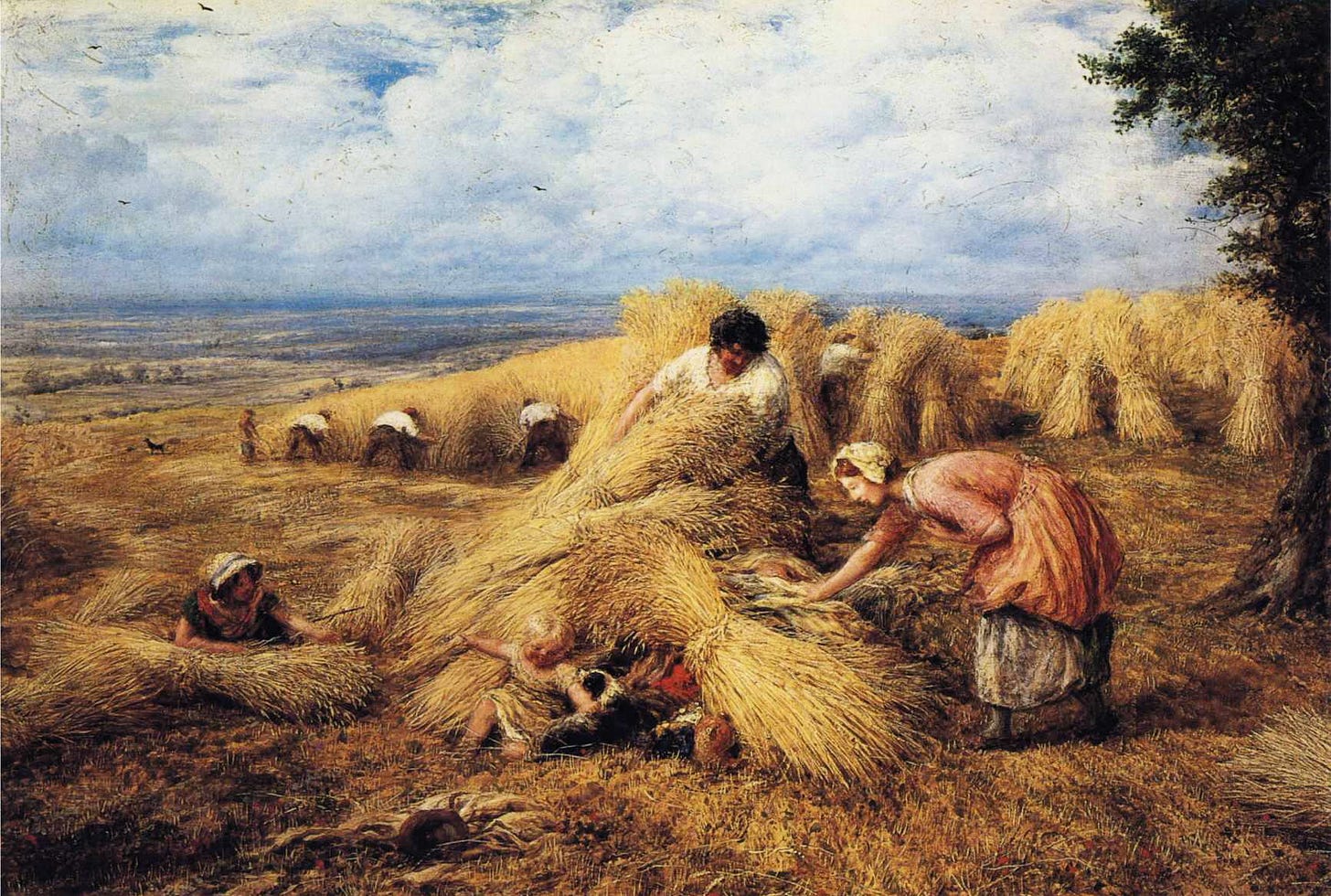
The men and women who harvested the crops were often rewarded by the farmers and land owners with beer, ale and a harvest feast. As agriculture and the need for manual reaping of crops declined across the British Isles, the harvest feast was replaced with harvest festivals. These festivals often occurred on the Sunday closest to the Harvest Moon, the full moon closest to the autumn equinox, although different dates were chosen depending on the community. Their popularity declined as Christianity spread until churches began to celebrate harvest festivals in the Victorian era. The first recorded ‘modern’ church-based harvest festival occurred in 1843, when the Reverend Robert Stephen Hawker from Morwenstow, Cornwall invited his parishioners to a special harvest thanksgiving service.
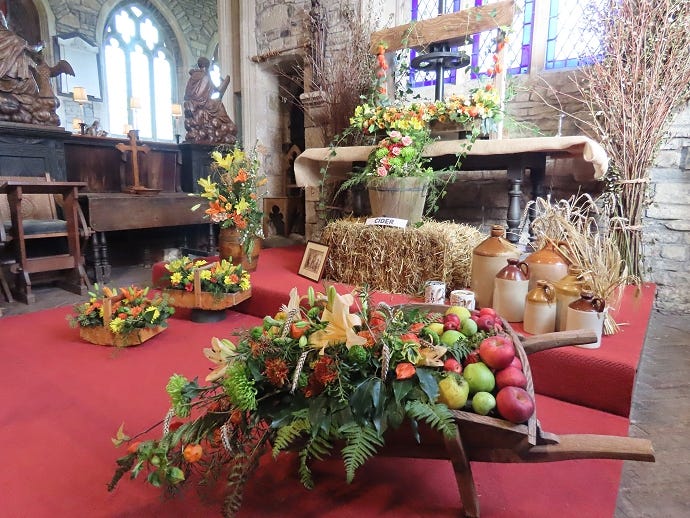
Modern pagan traditions, particularly Wicca and Druidry, also mark the autumn equinox, celebrating the change of seasons and the harvest with feasts and rituals called Mabon. Mabon was coined in the late 1960s by neopagan writer Aiden Kelly, who helped establish Wicca and developed the eight pagan festivals, called sabbats, that formed the Wheel of the Year. Mabon was the name of a character from the medieval Welsh prose epic, the Mabinogion that forms part of the Arthurian Cycles.
Haustblót - Scandinavian and Germanic
The autumn equinox was also important for Scandinavian and Germanic people. It was known as Haustblót in Old Norse, or Winter Finding, a time to celebrate the harvest, prepare for winter and offer sacrifices. Crops and harvests were stored and preserved, livestock was moved into barns, and extraneous animals were slaughtered and preserved. People prepared to stay indoors, cleaning their houses, mending their hunting gear, and ensuring mead would be ready in time for the mid-winter celebration of Yule.
The harvest was celebrated with bonfires, feasts, and drinking as well as blót, sacrifices to maintain good relations with their gods, show gratitude for the harvest reaped and offer prayers for protection against the challenges of the winter months. These celebrations are experiencing a modern revival in Norse Pagan communities, like the Saxon & Viking Fire Festival, at Buster Ancient Farm in Hampshire, England, which includes an Equinox Viking Boat Burn.
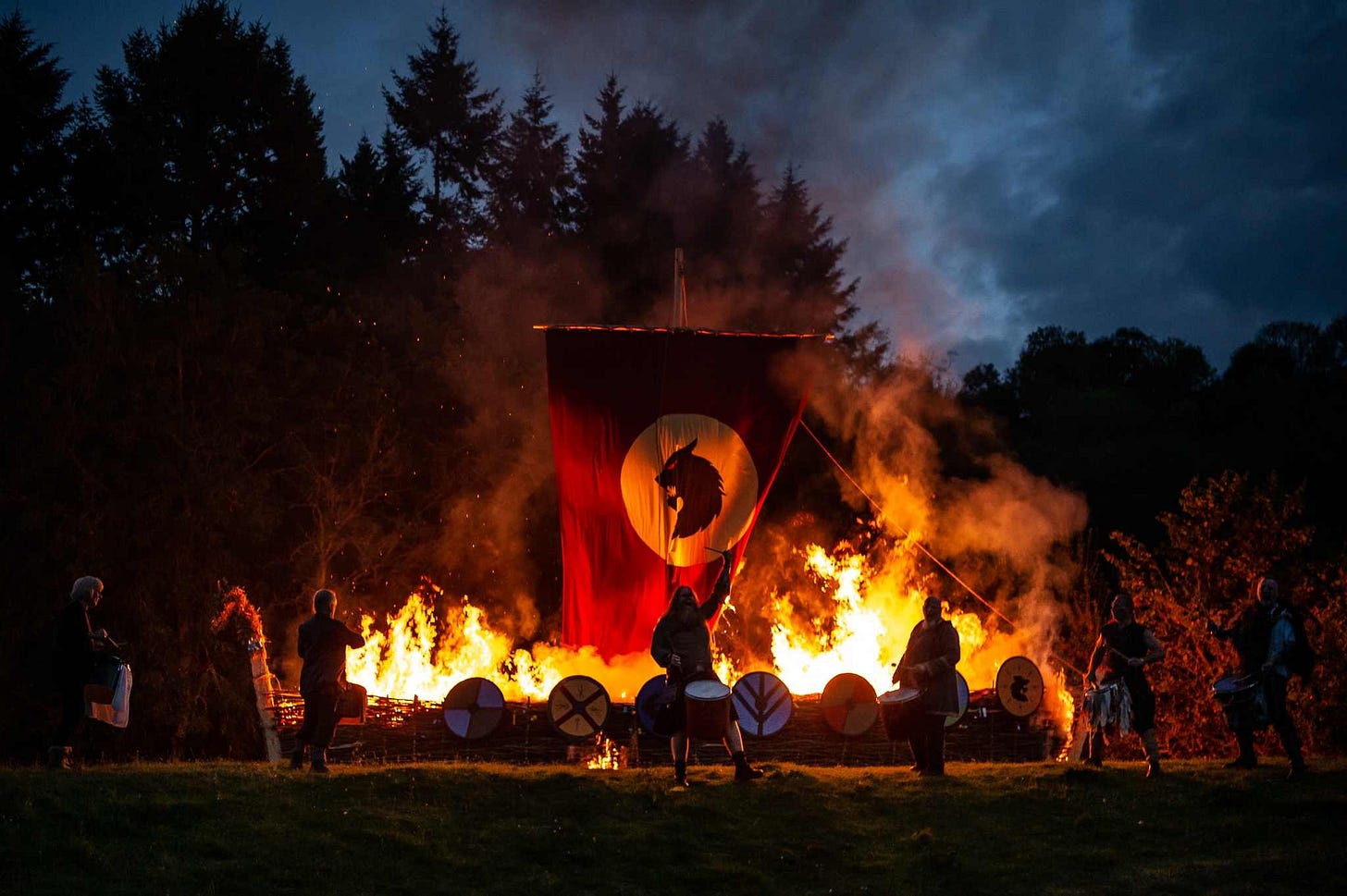
Rodogoshch (Tausen) - Slavic
Eastern European and Slavic cultures also celebrated the autumn equinox and the harvests with various regional pagan customs. These harvest customs, now commonly called Rodogoshch (Tausen), are being revived through the Slavic Neopagan movement, also called Slavic Native Faith or Rodnovery.
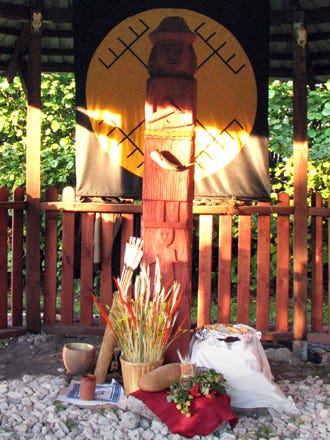
I hope you have the chance to witness this week’s Blood Moon. If you can, get up before dawn next week on Thursday, March 20 to catch the autumn equinox sunrise. Next week we will explore the world of foraging: its joys, dangers, rules and recipes. In the meantime, I offer you a seasonal traditional Irish blessing:
Let your heart be glad for the harvest done, and may your winter be warm the whole season long.
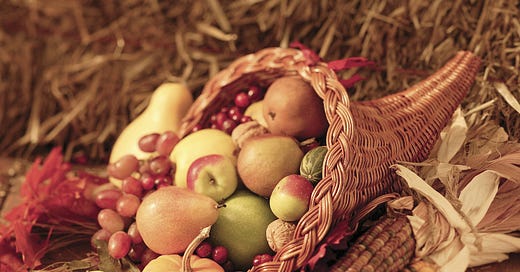
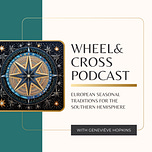

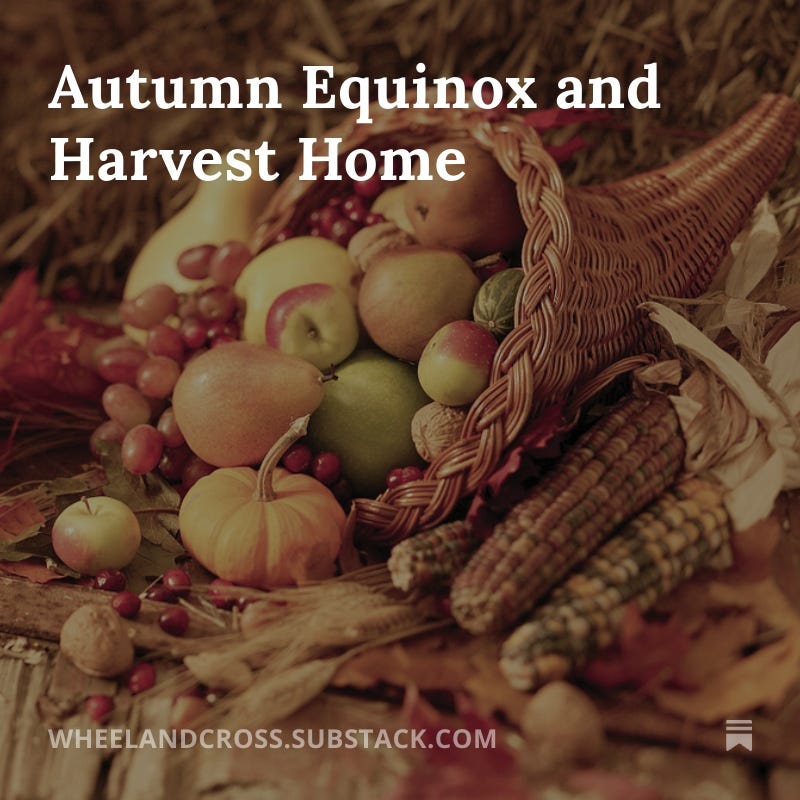











Share this post